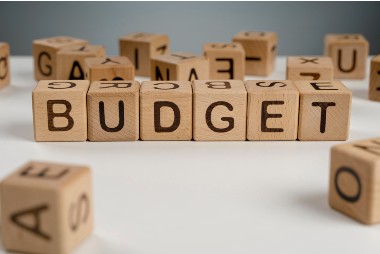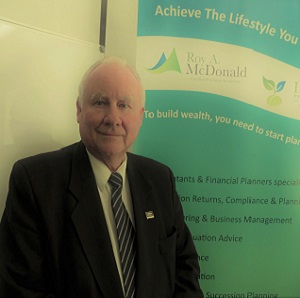The 2025-26 Australian Federal Budget was handed down by Federal Treasurer Dr Jim Chalmers on…
Year end superannuation contributions & concessions

With the financial year-end fast approaching, there is still time to take advantage of the various superannuation contribution strategies and concessions that are available. The following comprises a brief summary of these strategies and concessions:
- Personal tax-deductible contributions
Concessional contributions cap is $25,000 for all individuals. People under age 67 may be eligible to claim a tax deduction for making a personal contribution to their superannuation fund of up to $25,000 in the current financial year. For employees, their employer 9.5% Superannuation Guarantee (SG) contributions, superannuation contributions paid on bonuses plus any salary sacrifice amounts to superannuation, also count towards this cap. Where this applies, the available personal tax-deductible contribution will be limited to the difference between the $25,000 cap and the amount of the employer contributions.
Is it possible to contribute to superannuation after age 67?
If someone is 67 years or over but no older than 75, they may also be eligible to make a concessional or non-concessional contribution if they either:
- meet the work test (working 40 hours over 30 consecutive days in the relevant financial year), or
- meet the work test exemption. Individuals between 67 and 74 in the first year of their retirement can make voluntary contributions into their superannuation account without needing to satisfy the work test (the work test exemption). The relaxation of the work test rules only applies once, and one cannot make contributions in subsequent financial years without meeting the work test. To qualify, a person must have had less than $300,000 in their superannuation account at the end of the previous financial year.
- Non-concessional (after-tax) contributions
Non-concessional contributions cap is $100,000 per individual, subject to a $1.6 million total superannuation balance. The standard non-concessional contribution limit is $100,000 p.a. for each individual as long as their total superannuation balance (TSB) on the last day of the previous financial year (that is, 30 June 2020) was less than $1.6 million.
- Bring-forward non-concessional contributions cap
Under the bring-forward rule, a person can bring forward an additional two years’ worth of non-concessional contributions, allowing them to make a contribution of up to $300,000. Once they have triggered the bring-forward rule (contributing more than $100,000 in any financial year), they have up to three years to utilise the bring-forward cap. The cap is subject to one’s total superannuation balance as shown in Table 1.
| TSB | Bring-forward non-concessional period | Bring-forward contribution cap |
| As at 30/6/2020 | ||
| Less than $.4m | $300,000 | 3 years |
| $1.4m to less than $1.5m | $200,000 | 2 years |
| $1.5m to less than $1.6m | $100,000 | 1 year |
| $1.6m or greater | Nil | N/A |
The bring-forward cap is age restricted and not currently available to individuals aged 65 or over. It is expected that this will rise to age 67 in the near future. 1
“The bring-forward cap is age restricted and not currently available to individuals aged 65 or over. It is expected that this will rise to age 67 in the near future.”
- Carry-forward concessional contributions
Individuals can make catch-up concessional contributions into their superannuation fund using their unused concessional contributions cap amounts from previous years. To qualify, individuals must have a TSB of less than $500,000 on 30 June of the previous financial year and must not have used all of their $25,000 annual concessional contributions cap in the previous financial year.
Under the rules, individuals can carry-forward up to five years of unused concessional contributions caps for use in a later financial year, but the rolled-forward amounts expire after five years. The five-year carry-forward period commenced on 1 July 2018, meaning 2020/21 is only the second year in which catch-up contributions can be made. For individuals aged 67 or over, the normal work test rules apply.
- Downsizer contributions
People aged 65 years and over can make non-concessional contributions of up to $300,000 using the proceeds from the sale of their principal residence. This measure provides a mechanism to those who may otherwise be restricted in making additional contributions to superannuation due to their age and circumstances.
To qualify, an individual or their spouse can sell any dwelling in Australia (other than a caravan, houseboat, or mobile home) provided it has been owned for at least 10 years. While the dwelling does not have to have been lived in continuously over the 10 years leading up to the sale, it must meet the test for a ‘main residence’ exemption under the capital gains tax rules.
Downsizer contributions must generally be made within 90 days of settlement of the home sale unless an extension is granted by the Australian Tax Office.
While an individual can only ever make downsizer contributions in respect of one main residence, their spouse may also make a downsizer contribution of up to $300,000 from the proceeds of the same home sale, provided the combined contribution amounts do not exceed the total sale proceeds.
A further benefit of downsizer contributions, unlike other non-concessional contributions, is the fact they are not subject to the $1.6 million (as at 30 March 2021) individual total superannuation balance cap.
Interestingly, individuals are also not required to actually ‘downsize’ their living arrangements after selling an eligible home to be able to make this type of superannuation contribution.
- First Home Super Saver Scheme
The First Home Super Saver Scheme allows a person to save money inside their superannuation fund for their first home. Contributions that count towards the scheme include voluntary concessional or non-concessional contributions, and do not include employer SG contributions.
An individual also cannot contribute more than allowable under the standard concessional and non-concessional caps. If a person meets the eligibility criteria, they may be eligible to withdraw up to $30,000 ($15,000 of contributions made in any one financial year up to a total of $30,000 in contributions over all years) plus earnings on those contributions to assist with buying their first home.
- Spouse contributions tax offset
Maximum tax offset is $540
A person can claim up to $540 as a tax offset if they make a $3,000 after-tax superannuation contribution for their spouse who has total income of less than $37,000. 2 The recipient spouse must be under age 75 and must have a TSB of less than $1.6 million as at 30 June 2020 (immediately before the start of the 2020/21 financial year). The tax offset amount reduces when the spouse’s income is greater than $37,000 and completely phases out when the spouse’s income reaches $40,000.
- Government co-contribution
Maximum co-contribution entitlement is $500
If you make a post-tax contribution of $1,000, the federal government will make a co-contribution of $500 into their superannuation account if total income (earned as an employee 3) is $39,837 or less. The co-contribution cuts out when an individual’s income exceeds $54,837. A person must be less than 71 years of age and have a total superannuation balance of less than $1.6 million as at 30 June 2020.
- Low income super tax offset
The maximum low income super tax offset (LISTO) is $500
If a person’s total income is $37,000 or less, they may be eligible for LISTO payment on the concessional contributions they or their employer makes. The government will pay the maximum LITSO of $500 into a person’s superannuation account on a concessional contribution of $3,334, effectively reducing the tax on that contribution to nil.
Notes
1 The proposed change to the bring-forward measure is contained in the Treasury Laws Amendment (More Flexible Superannuation) Bill 2020. The change to the bring-forward measure was meant to take effect from 1 July 2020, however, the Bill was still before the Senate as at end March 2021.
2 Total income is based on recipient spouse’s assessable income, including reportable fringe benefits and salary sacrifice contributions.
3 A person can also earn self-employment income or business income, but it must be less than 10% of their total income, including reportable fringe benefits and reportable super contributions.
If you would like professional assistance with your financial plan, please telephone our office on (03) 9848 5933 and speak with our Financial Planner today.
Source: https://www.fiducian.com.au/
Lindale Insurances Pty Ltd ATF Lindale Insurances Trust ABN 27 027 421 832 is a Franchisee of Fiducian Financial Services Pty Ltd, Level 4, 1 York Street, Sydney NSW 2000. AFSL 231103 ABN 46 094 765 134.
The information (including taxation) provided on this website is general in nature and does not consider your individual circumstances or needs. Do not act until you seek professional advice and consider a Product Disclosure Statement.
Disclaimer:
The views expressed in this publication are solely those of the author; they are not reflective or indicative of Fiducian. They cannot be reproduced in any form without the express written consent of the author.



